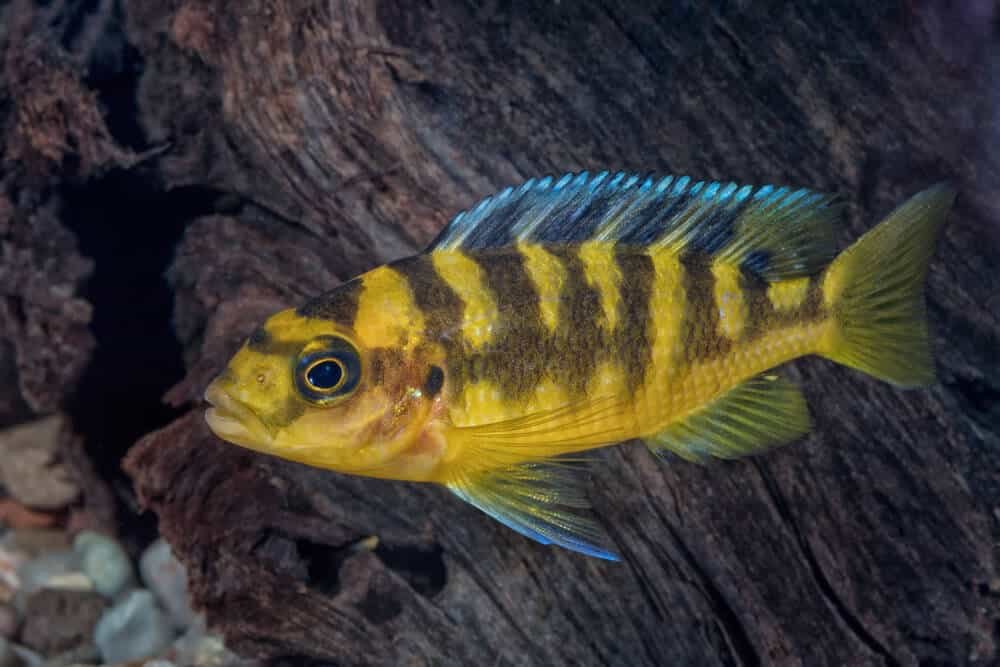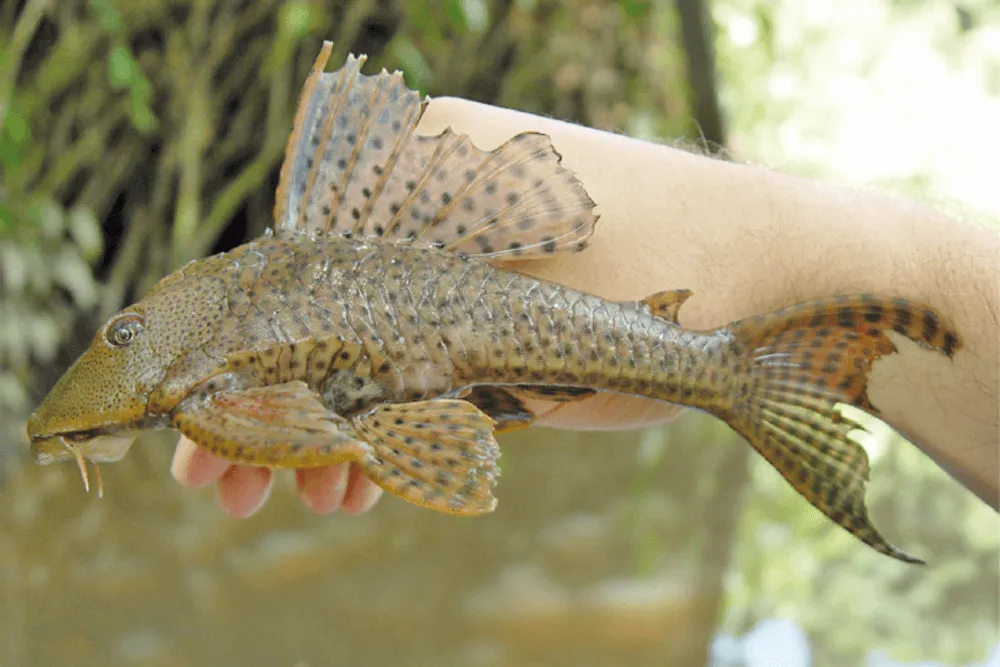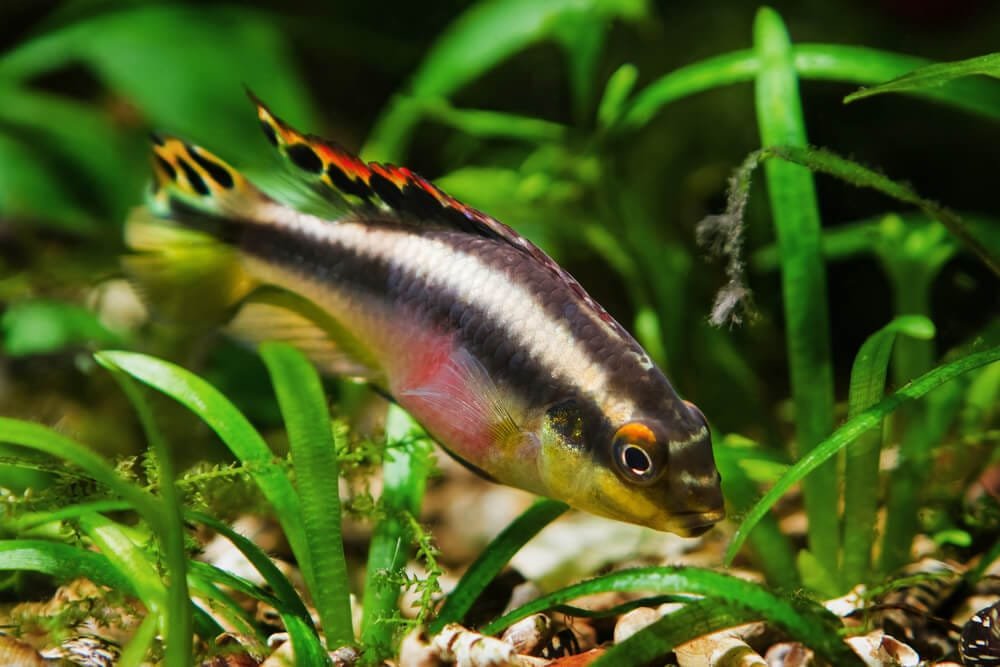What Are Some Interesting Facts About Kuhli Loaches?
If you’re curious about the fascinating world of aquatic creatures, Kuhli Loaches should definitely be on your radar. These quirky little fish offer a unique addition to any aquarium setup, with their long, slender bodies and playful personalities. In this article, we’ll uncover some intriguing facts about Kuhli Loaches that will make you appreciate their charm even more. So, get ready to be amazed by their nocturnal nature, their skillful burrowing abilities, and the mysterious bonds they form within their social groups.
Physical characteristics of Kuhli Loaches
Body shape and size
Kuhli Loaches have a long, slender body shape that is cylindrical in appearance. They can grow up to 4 inches in length, making them a relatively small species of loach. Their body is covered in smooth, scaleless skin, which gives them a unique tactile sensation when touched.
Coloration and patterns
Kuhli Loaches are known for their striking coloration and patterns. They have a dark brown or black background color, with five or six bold orange or yellow bands running horizontally across their body. These bands create an eye-catching contrast against their dark background, making them highly visible in the aquarium.
Unique appearance
One of the most unique aspects of Kuhli Loaches’ appearance is their eel-like shape and movement. They have a smooth, flexible body that allows them to easily maneuver through the water and burrow into substrates. Furthermore, their small size combined with their colorful bands make them stand out among other fish species, adding a touch of charm and excitement to any aquarium.
Habitat and distribution
Native regions
Kuhli Loaches are native to Southeast Asia, specifically Indonesia, Malaysia, Singapore, and Thailand. They can also be found in the islands of Borneo and Sumatra in Indonesia. These regions are known for their warm, tropical climates, which provide the ideal environment for Kuhli Loaches to thrive.
Preferred habitats
In their natural habitat, Kuhli Loaches are primarily found in slow-moving freshwater streams, rivers, and marshes. They prefer areas with dense vegetation and plenty of hiding spots, such as fallen leaves, submerged tree roots, and crevices in rocks. These habitats provide them with both protection and an abundant food source, mimicking the natural conditions in which they have evolved.
Social behavior and compatibility
Shoaling nature
Kuhli Loaches are highly social fish and thrive in groups, so it is recommended to keep them in shoals of at least six individuals. They are known to exhibit a variety of interesting behaviors when kept together, such as chasing each other, exploring the tank, and even performing peaceful “dances” where they twist and twirl around each other.
Interactions with other fish
Kuhli Loaches are generally peaceful and non-aggressive towards other fish species. However, they might become timid if kept with large, aggressive tank mates. It is important to choose compatible tank mates that have similar peaceful behavior and do not pose a threat to the Kuhli Loaches.
Ideal tank mates
Some suitable tank mates for Kuhli Loaches include other peaceful community fish, such as small tetras, guppies, rasboras, and dwarf cichlids. It’s crucial to avoid keeping them with fin-nipping or aggressive species that could stress or harm them. Additionally, providing plenty of hiding spots, such as caves, plants, and driftwood, will help create a harmonious and stress-free environment for all the inhabitants of the aquarium.
Diet and feeding habits
Omnivorous diet
Kuhli Loaches are considered omnivores, meaning they consume both plant and animal matter. They have a diverse diet in the wild, feeding on insects, small crustaceans, and detritus. In an aquarium setting, their diet can be supplemented with a variety of commercially available foods to ensure they receive a balanced nutritional intake.
Preferred food items
Kuhli Loaches have a preference for small food items, such as small pellets, flakes, and frozen or live foods like bloodworms, brine shrimp, and daphnia. Additionally, they also enjoy nibbling on algae and organic matter found in the substrate. Providing a varied diet that includes both commercial and natural food sources will keep them healthy and satisfied.
Feeding frequency
Kuhli Loaches should be fed small amounts of food multiple times a day. This mimics their natural feeding behaviors and ensures they receive an adequate intake of nutrients. Overfeeding should be avoided to prevent water pollution and obesity, as Kuhli Loaches have a tendency to eat more than they actually need.
Reproduction and lifecycle
Breeding behaviors
Breeding Kuhli Loaches in the aquarium can be a challenging task, as they require specific conditions to trigger their natural mating behaviors. The males typically chase the females during breeding time, while the females scatter small adhesive eggs on suitable surfaces like plants, rocks, or aquarium glass.
Egg deposition and care
After fertilization, the female Kuhli Loach does not show any further parental care. The eggs hatch within a few days, and the fry are left to fend for themselves. To increase the chances of successful breeding, it is essential to provide a separate breeding tank with appropriate hiding spots and controlled water parameters.
Development stages
The fry of Kuhli Loaches are incredibly tiny and transparent when they first hatch. They must be provided with an abundance of microscopic food sources, such as infusoria, baby brine shrimp, and specially formulated fry food, to ensure their healthy growth and development. With proper care and dedication, the fry will gradually grow into adult Kuhli Loaches, continuing the lifecycle of this fascinating species.
Common health issues
Susceptibility to diseases
Kuhli Loaches, like many other fish species, can be susceptible to various diseases and parasites. It is essential to provide them with proper care and a suitable environment to minimize the risk of illness. Water quality, nutrition, and regular observation are crucial factors in maintaining the overall health and well-being of Kuhli Loaches.
Signs of poor health
Some common signs of poor health in Kuhli Loaches include loss of appetite, abnormal swimming behavior (such as lethargy or erratic movements), external parasites like ich or velvet, fin deterioration, and changes in coloration. If any of these symptoms are observed, it is important to seek veterinary advice or consult with an experienced aquarium hobbyist.
Preventive measures
To prevent health issues, it is crucial to maintain good water quality by regularly testing and monitoring parameters such as ammonia, nitrite, nitrate, and pH levels. Providing a balanced diet, avoiding overfeeding, and performing regular water changes will also contribute to the overall health and disease prevention of Kuhli Loaches.
Aquarium setup and requirements
Tank size and specifications
Kuhli Loaches are relatively small, but they require ample swimming space due to their active nature. A minimum tank size of 20 gallons is recommended for a small group of six individuals. A longer tank with a footprint that allows them to swim and explore is preferable over a tall or narrow tank that restricts their movement.
Substrate and decoration
Kuhli Loaches have a natural instinct to burrow, so providing a soft substrate like sand or fine gravel is ideal. This allows them to exhibit their natural behaviors and helps them feel secure. Additionally, adding plenty of plants, driftwood, and rocks will provide hiding spots and mimic their natural habitat, creating a visually appealing and stimulating environment.
Filtration and water parameters
Kuhli Loaches prefer clean, well-filtered water with gentle water flow. A good-quality filtration system is necessary to maintain adequate water quality and remove any buildup of waste. They thrive in tropical water conditions with a temperature range of 75-82°F (24-28°C), a pH level between 6.0-7.5, and a moderate hardness level.
Lighting conditions
Kuhli Loaches are generally indifferent to lighting conditions, but it is essential to provide a suitable light source to facilitate the growth of live plants in the aquarium. A natural or full-spectrum light with a timer to simulate day and night cycles is recommended. This will help create a stable environment and regulate the natural behaviors and biological functions of the Kuhli Loaches.
Maintenance and care
Water quality management
Regular water testing and maintenance are vital to ensure the well-being of Kuhli Loaches. Weekly water changes of around 20% are recommended to remove accumulated waste and maintain proper water conditions. Vacuuming the substrate during water changes helps remove any uneaten food or debris that could compromise water quality.
Feeding routine
Establishing a regular feeding routine is essential for the health and happiness of Kuhli Loaches. Feed them small amounts of food multiple times a day to mimic their natural feeding habits. Uneaten food should be promptly removed from the tank to prevent water pollution and maintain optimal water quality.
Aquarium cleaning
Regular cleaning of the aquarium is crucial to prevent the buildup of waste, algae, and other debris. This can be achieved through routine tasks such as algae scraping, wiping down the glass, and cleaning filter media as needed. Keeping the aquarium clean not only improves the aesthetic appeal but also promotes the overall health and well-being of the Kuhli Loaches.
Interesting behaviors and features
Burrowing habit
One of the most fascinating and endearing behaviors of Kuhli Loaches is their burrowing habit. They have a natural instinct to dig into the substrate, often disappearing completely from sight. This behavior serves as a form of protection, camouflage, and helps them scavenge for food and explore their surroundings.
Nocturnal activity
Kuhli Loaches are primarily nocturnal, meaning they are most active during the night. They tend to hide during the day and become more lively and energetic once the lights are dimmed. They have an innate ability to navigate through their environment in low-light conditions, making them fascinating creatures to observe during the quieter hours of the day.
Snake-like movement
Another interesting feature of Kuhli Loaches is their unique snake-like movement. Their slender bodies allow them to move in a sinuous, wave-like motion, resembling the movement of a snake. This adds to their overall charm and uniqueness, making them a captivating sight in the aquarium.
Endangered status and conservation
Threats to wild populations
Although currently not classified as endangered, Kuhli Loaches face certain threats to their natural populations. Habitat destruction due to deforestation, pollution from human activities, and overfishing for the aquarium trade are among the primary concerns. Ensuring sustainable collection methods and supporting efforts to protect their natural habitats are essential in safeguarding their long-term survival.
Conservation efforts
Conservation organizations and responsible aquarium hobbyists play a significant role in the protection and conservation of Kuhli Loaches. Supporting initiatives that promote sustainable fishing practices, conservation of natural habitats, and education about responsible fishkeeping can help ensure their preservation for future generations to enjoy. By understanding and appreciating the uniqueness of these remarkable fish, we can actively contribute to their conservation efforts.






